– and now Cambodia is designated by the United Nations as a “least developed country”.
During my recent trip to this beautiful country, with its beautiful, friendly, and impoverished people, I learned much about its history and its current unhappy situation – for its people at least.
Before visiting Siem Reap, the home of the temple of Angkor Wat, my only knowledge of the country came from newsreels during the Vietnam War, and later, from the Killing Fields of the Khmer Rouge.
The Khmer Empire was founded in 802 by King Jayavarman II, who built a capital city on a plateau in the Phnom Kulen mountains, some 50 km from present-day Siem Reap.
While on the Kulen mountain I visited the holy sites. Of particular note were the thousand lingas at Kbal Spean, and the Preah Ang Thom pagoda with its giant reclining Buddha. The area is a magnet to “kru khmer” (natural medicine doctors), and attracts people seeking blessings from its holy waters, particularly the potent life-giving waters at Kbal Spean, that are said to help couples conceive.



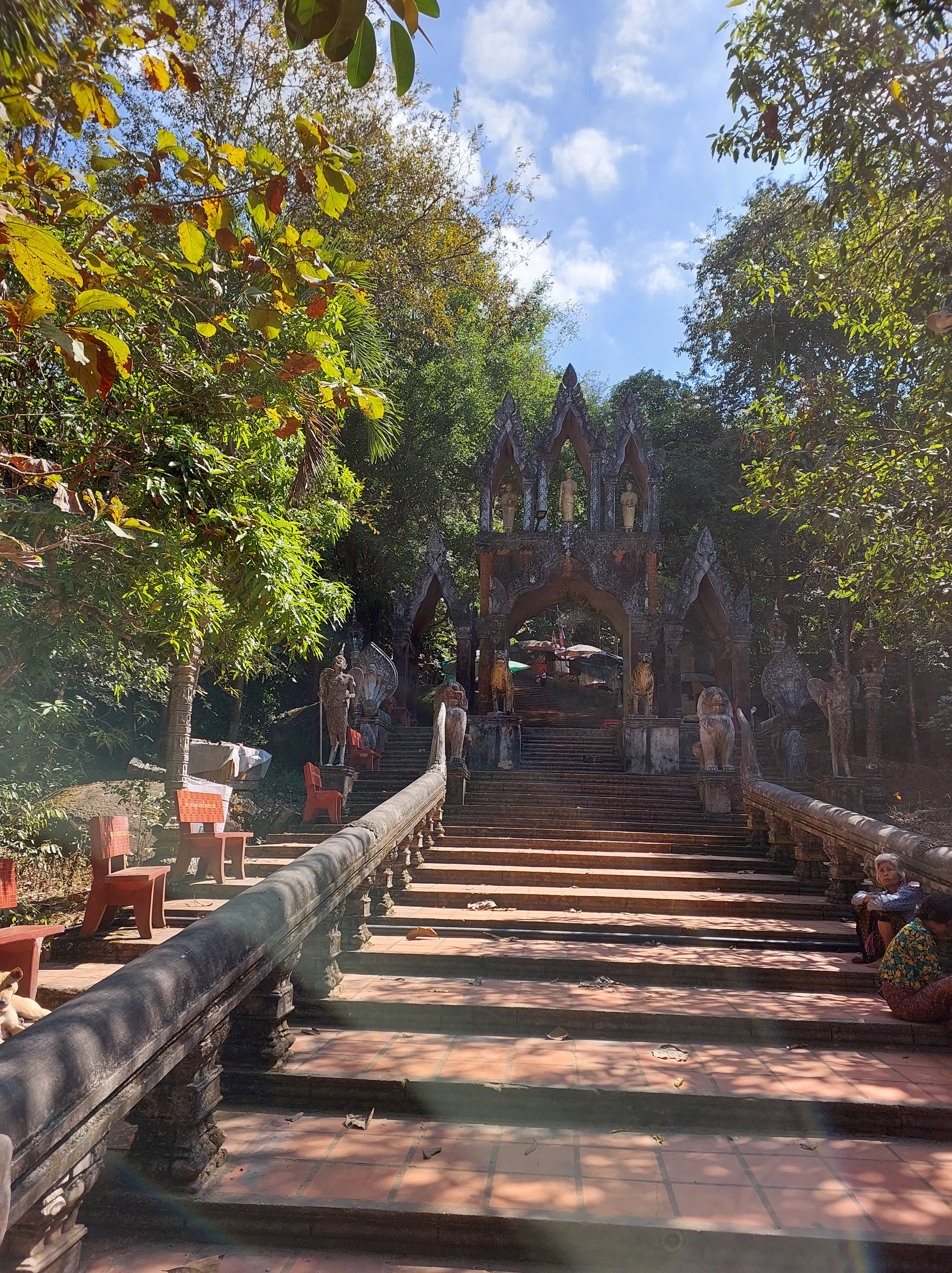
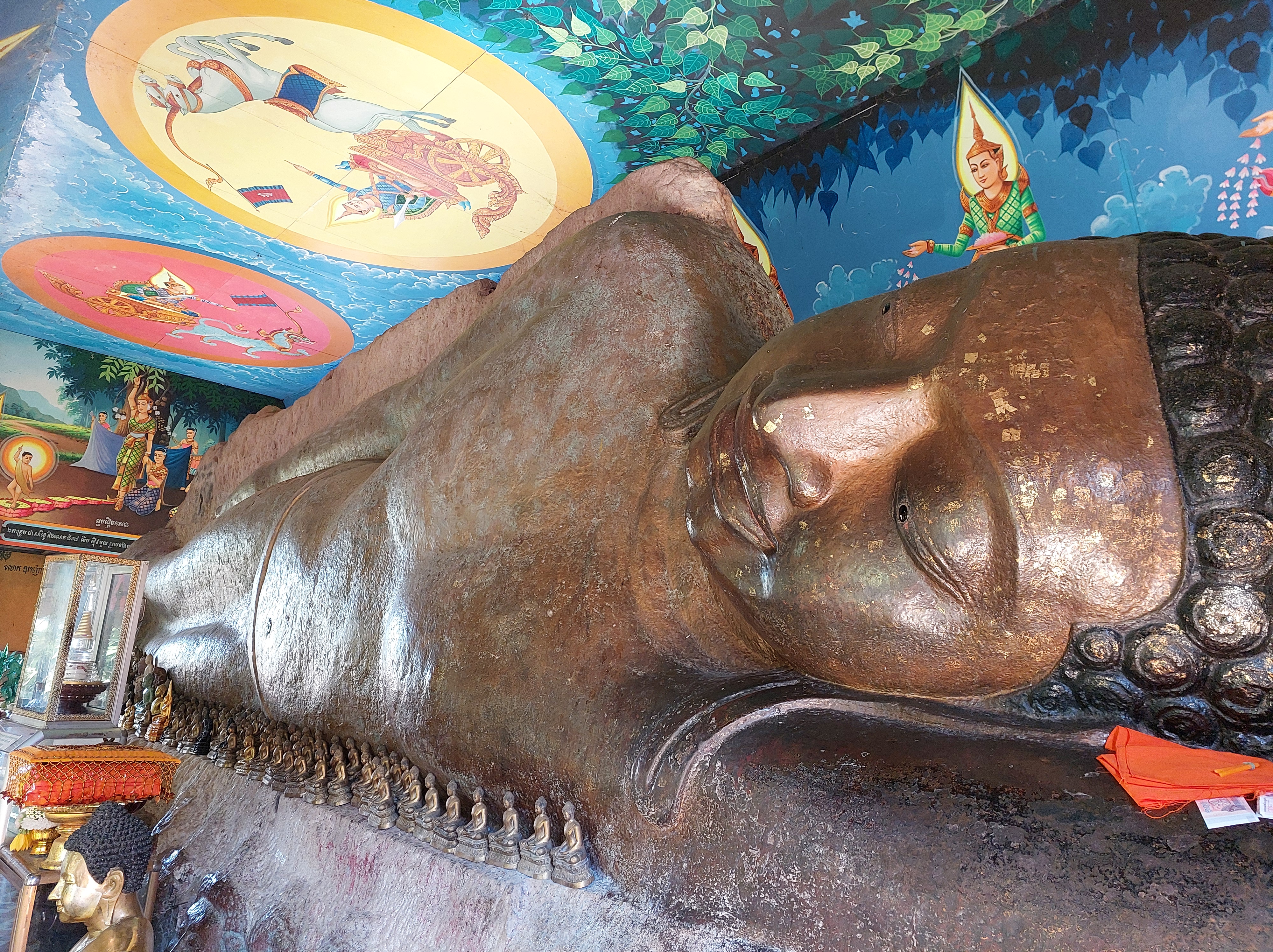
These photos show the wonderful view from the stone quarry, one or two of the lingas in the holy river, a holy pool, the steps to the temple of the sleeping Buddha, and the Buddha himself.
Once my trusty driver, Sout, had taken me to the temple, the holy waterfall, and the place where the stone for Angkor Wat was quarried, I was privileged to be able to visit the elephant statue at the site of the ancient city, now in the middle of the jungle. Large animals were hewn from the rocks to guard the mountain. The place I visited is called Sra Damrei (Elephant Pond). After a long and winding trip on a motorbike through jungle paths, I reached a clearing which was home to an elephant, an ox, two lions, and a frog, all carved from the rocks. From the site, magnificent views over the countryside towards Siem Reap abound. If you saw any of the Lost Temples of Cambodia series on Channel 4 – you will have an idea of where I went that day.
Not many tourists make it to this place. I doubt if strangers could ever find their way there without local help. At times on the journey, I wondered if I would ever be found again! I couldn’t ask my charming motorbike driver (Ny) since we had no language in common. But despite the lack of language, I was up close and personal – hugging Ny’s ample waist – for over an hour in total.
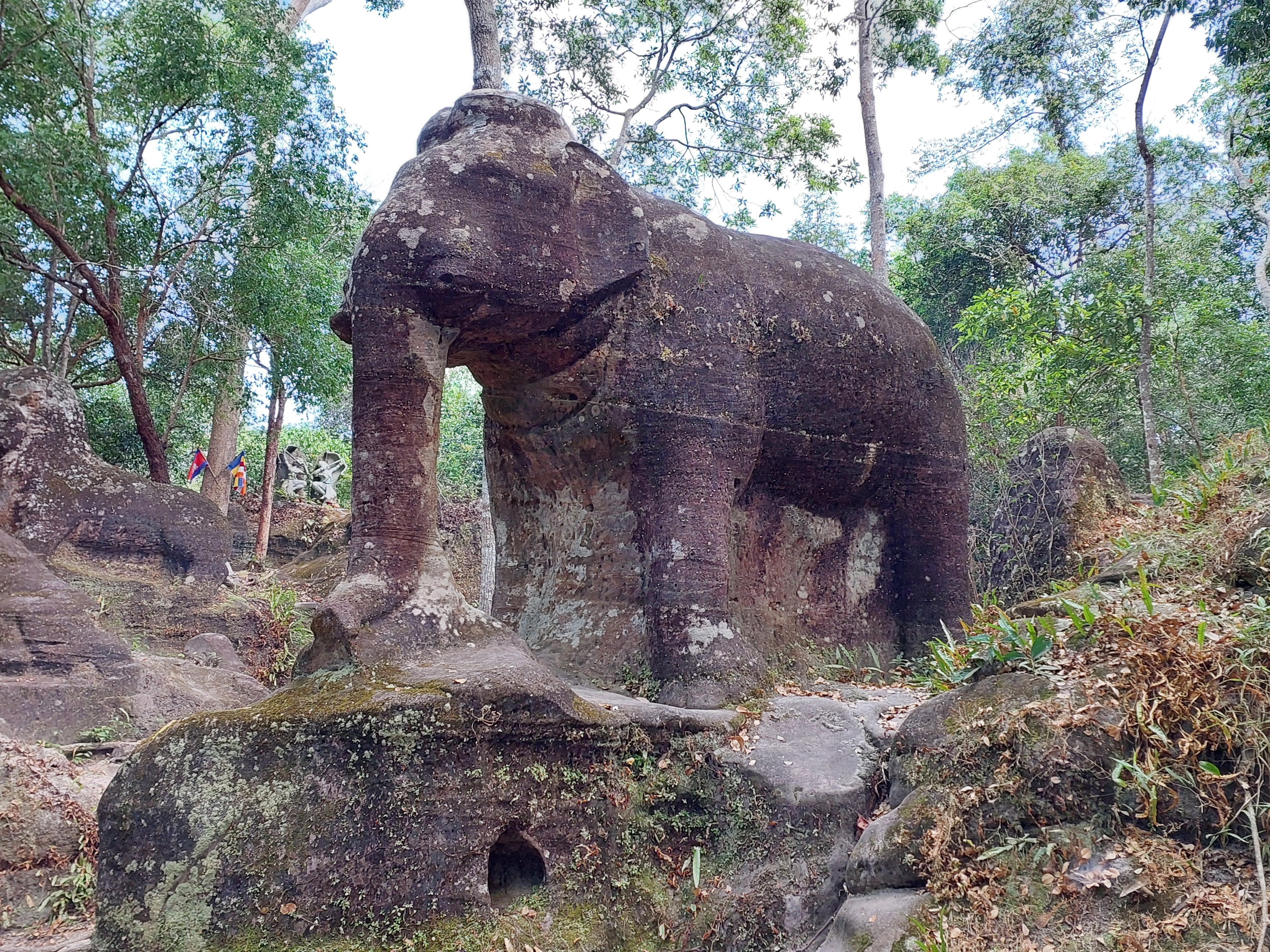


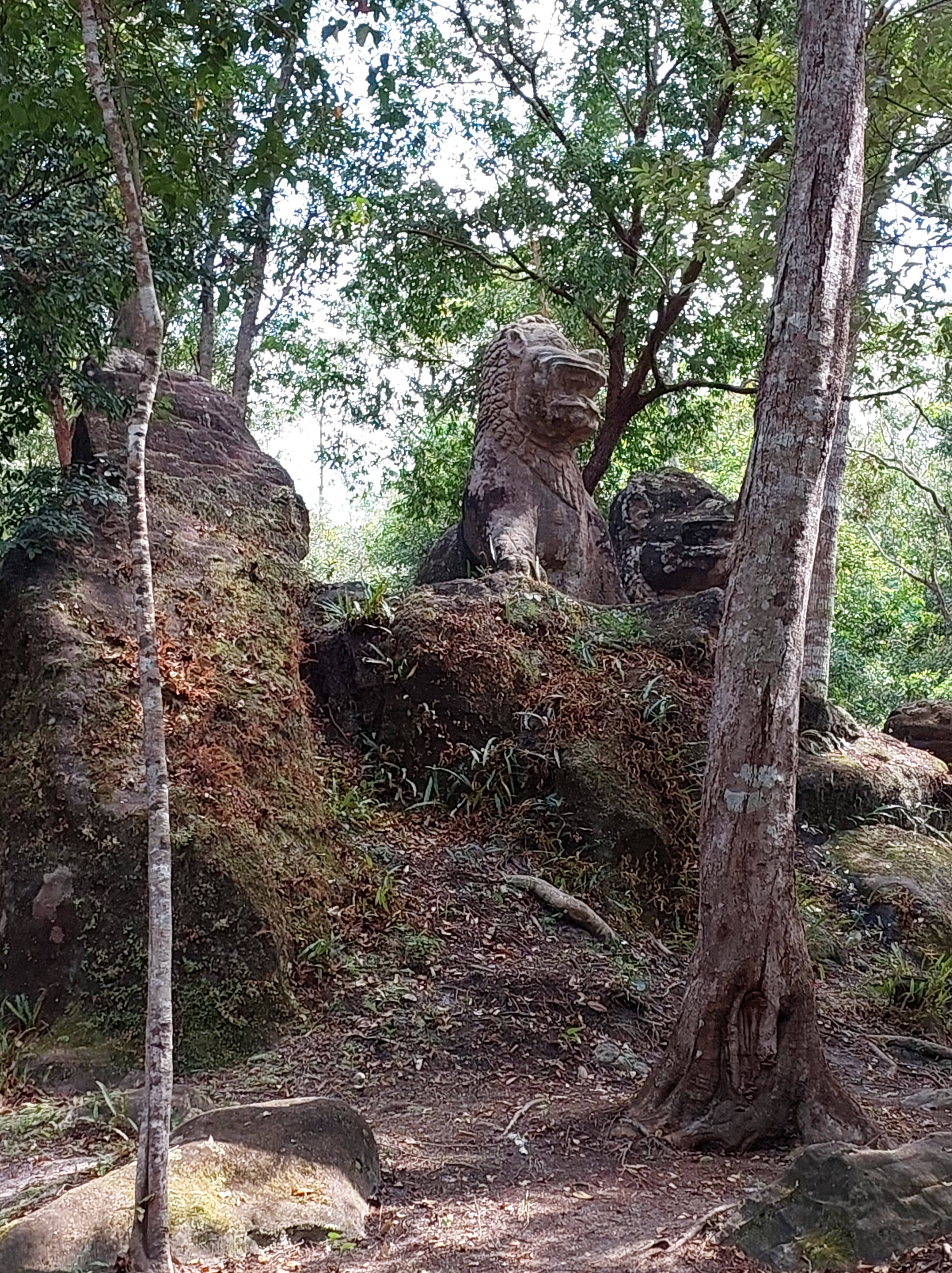
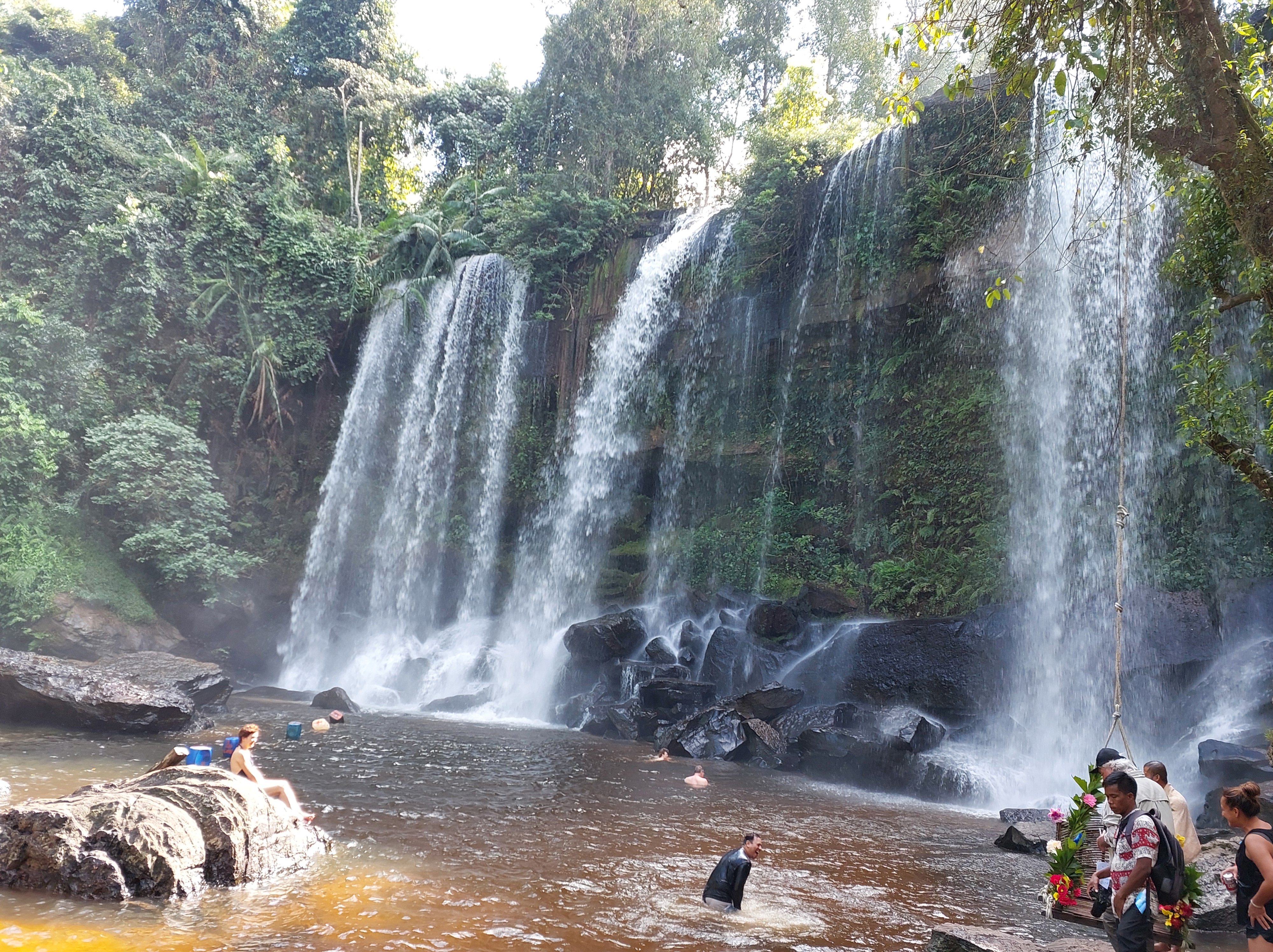

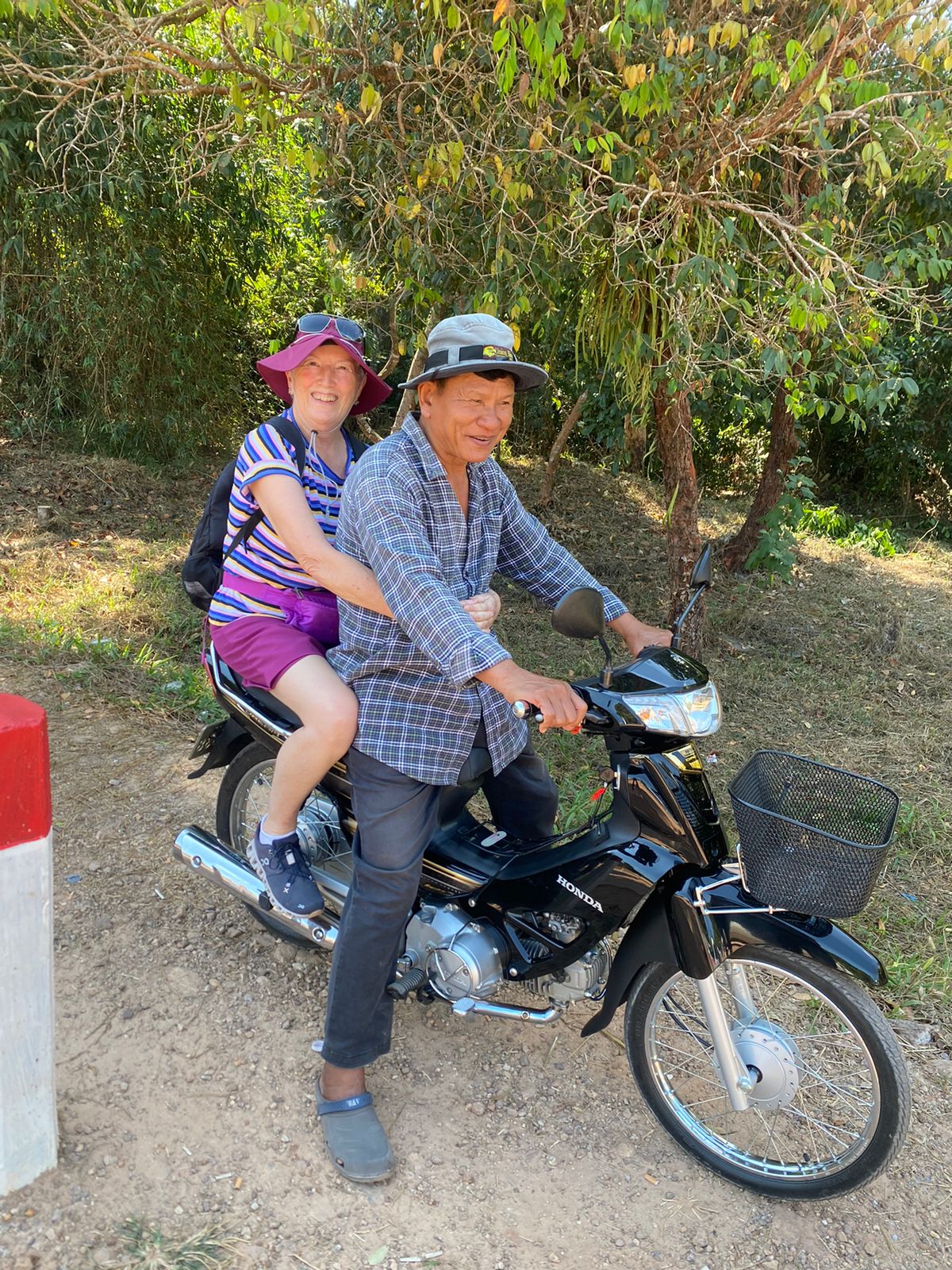
These photos show the ancient elephant and lion guards, the view from the old citadel, my trusty moto driver, Ny, and – more on the beaten track – the holy waterfall.
Once there, and having shaken out my aching legs and bum, I looked in wonder at the huge elephant, who has stood there for over 1200 years. I was sad that I had no guide to help me understand, but the following day at the Angkor Wat temple, my guide Tay explained to me what I had seen.
The citadel remained for a couple of centuries but an invasion by the Chams* from Vietnam conquered the dynasty. Later, having finally ousted the Chams, the Khmers built a new temple complex called Angkor Thom, in Angkor in the 12th century. The site covers some 160 hectares and contains more than a thousand buildings, including the famous Angkor Wat, Bayon and Ta Prohm of Tomb Raider fame (the roots of trees, hundreds of years old, puncture its ancient galleries). It is a strange experience to wander around the piles of fallen masonry and lichen-covered carvings.
My eyes were opened too to the religious history of the country. While today most Cambodians are Buddhist, and it is the official religion of the country, the ancient temples have enormous Indian Hindu influence from the earlier centuries. I was shown bas-reliefs depicting exquisitely carved scenes from Indian mythology, including the battle for dynastic succession at Kurukshetra. Indian influence in the territory had begun with the arrival of traders from Hindu kingdoms in 500 BCE. Sanskrit inscriptions can be seen all over the temple, and I was told that the temple was dedicated to the god Vishnu. Buddha was just one of the nine incarnations of Vishnu.
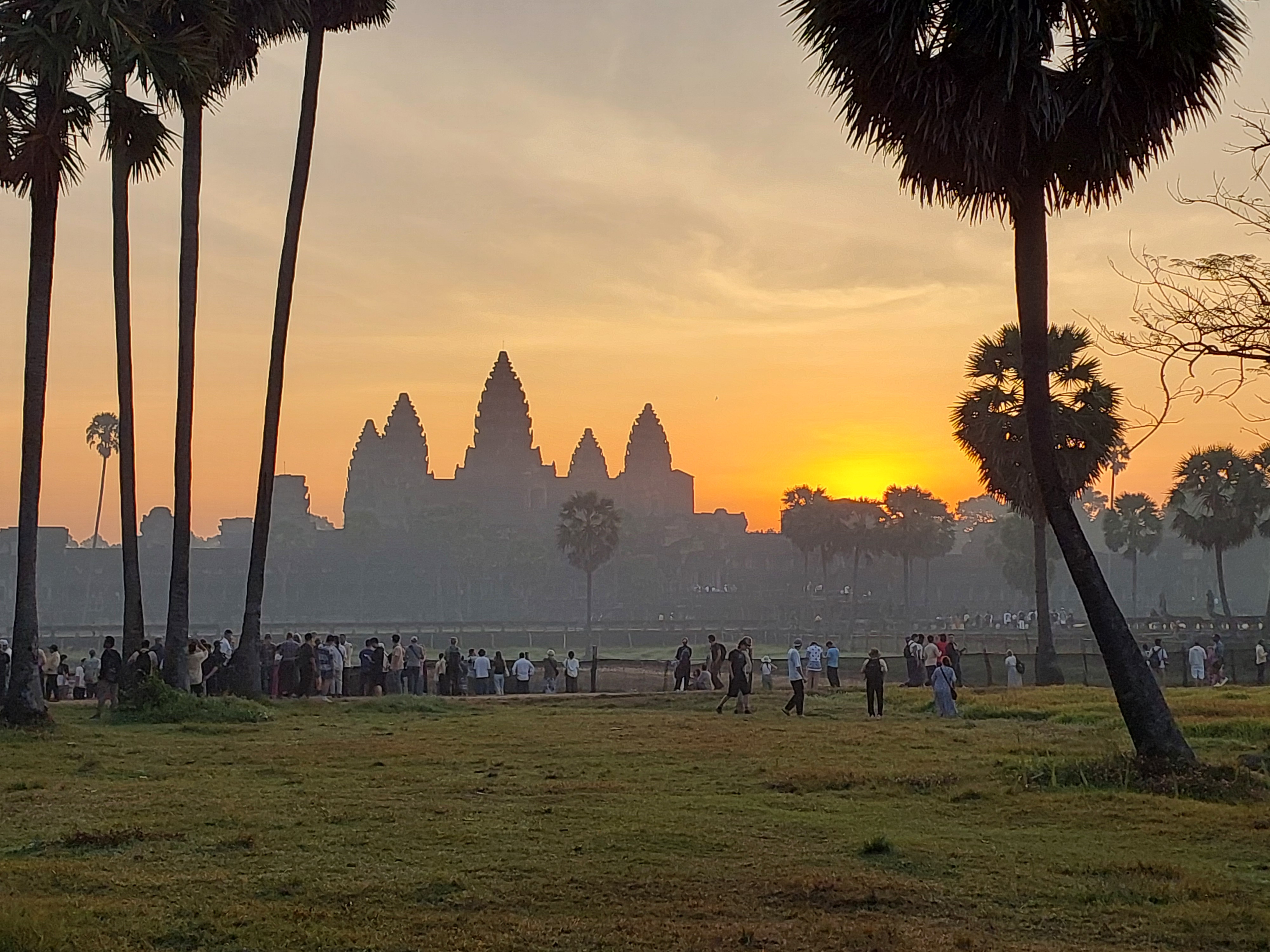


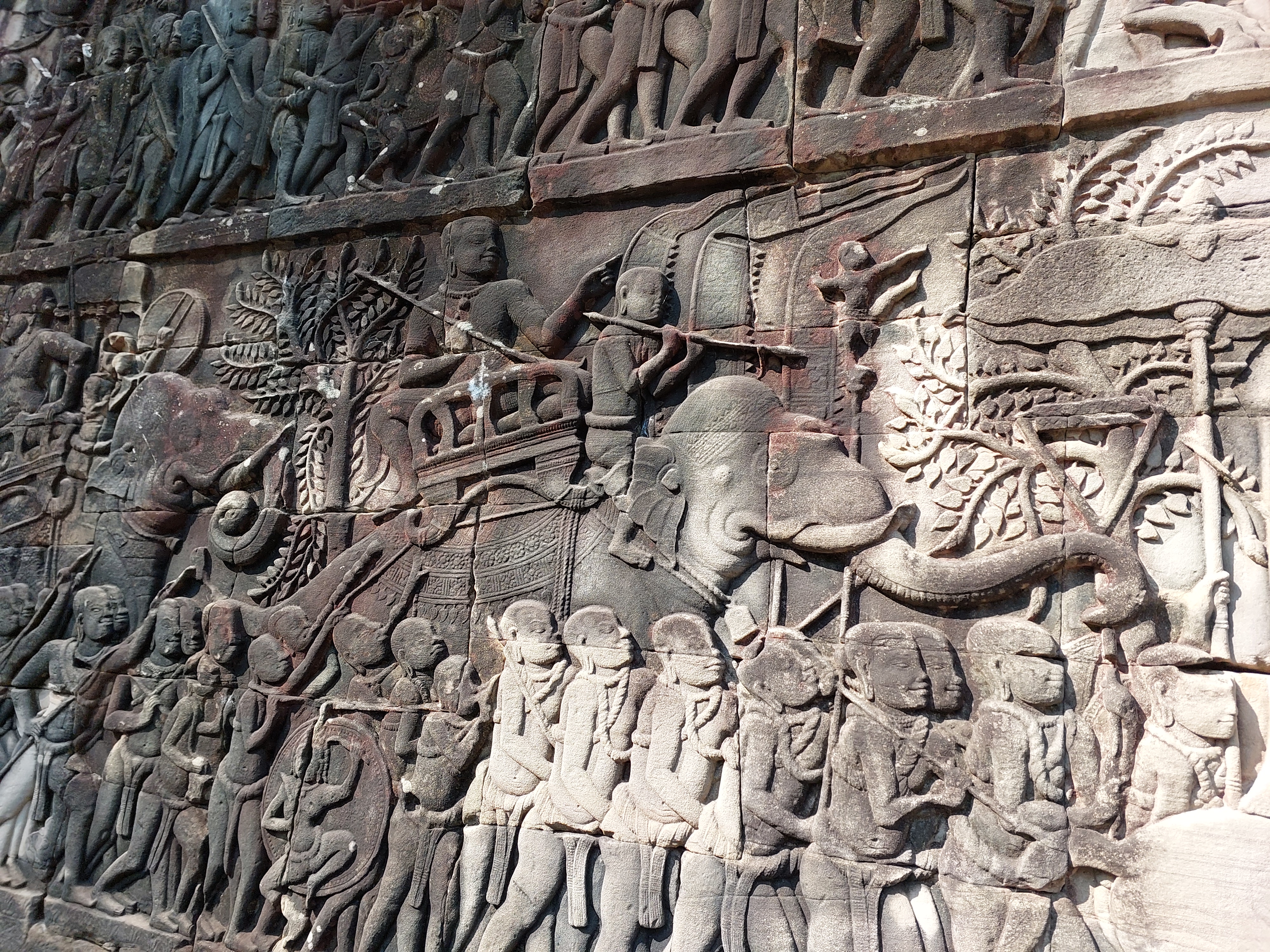
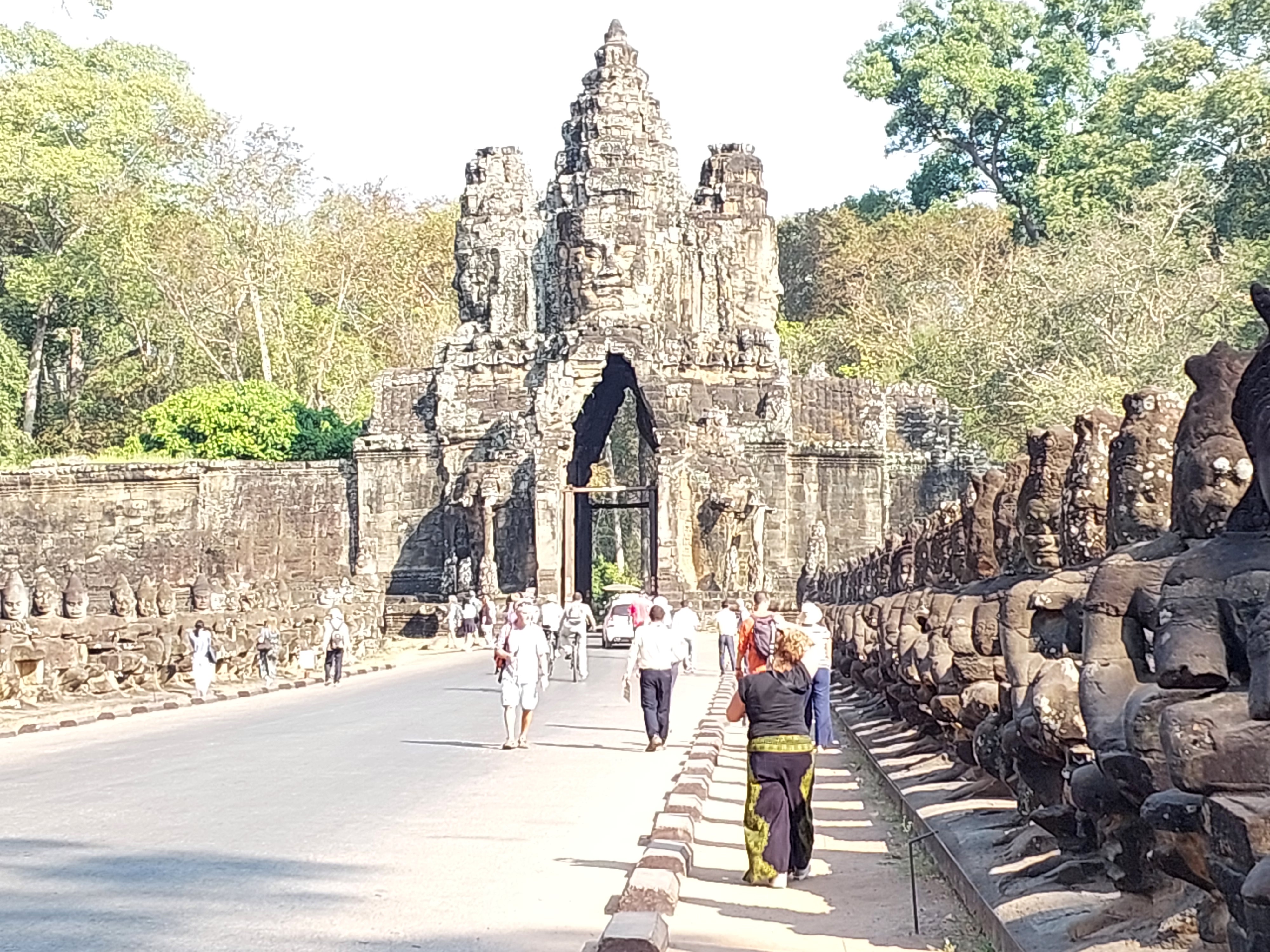
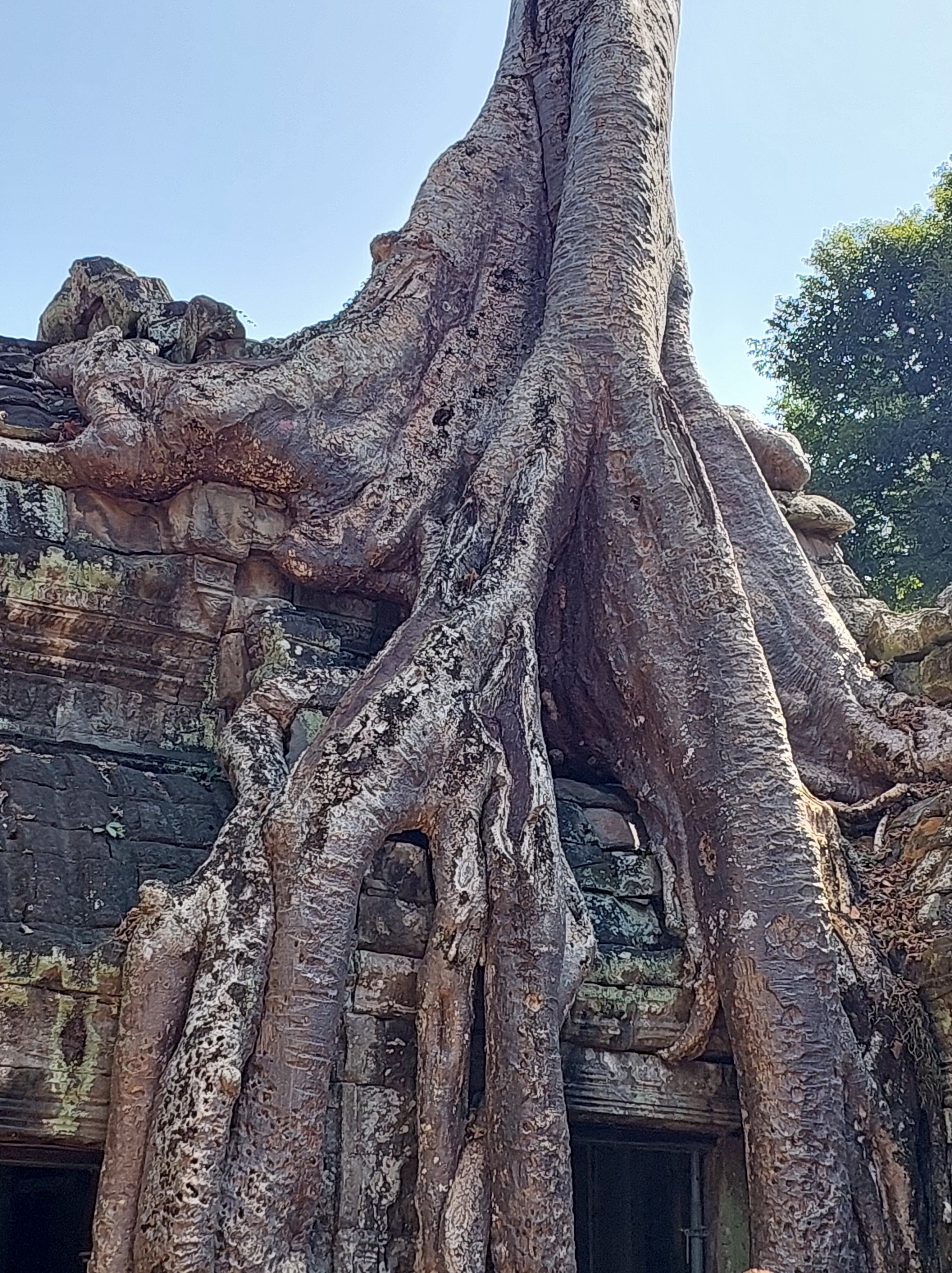
These images show the magical sunrise moment on my day in Angkor Wat, my guide Tay, so full of knowledge, one of the bas-reliefs at the main temple, the causeway into Bayon, and the trees grown into the Ta Prohm temple.
I cannot pretend to be an expert in the history and culture of Cambodia. But, with my new knowledge, contrasted with more recent history, I felt I had a better understanding of the people and the country, of which they are rightly proud.
I cannot end this blog without praising my driver, Sout. I will write in more detail about how I came across Sout and his brother Sa. They looked after me from the moment I arrived to the moment I left. My next blog will continue my adventure in this lovely country.
Cambodia is currently a one-party state, having emerged from wartime occupation by the Japanese, dependency on France, bombing by the USA, the appalling years of Khmer Rouge, and now a ruling party without opposition, I am sad for the friends I made there. Cambodia, at one time, was a thriving country, and now its people are very poor. There are efforts to help people out of poverty. Here is one charity aimed at education – but there are many more, and all worthwhile to help the very poorest in society.
*Last year I visited My Son in central Vietnam, the ancient temples of the Chams from the 4th to the 13th centuries.
Great writing, Lucy! Best wishes, Michael
LikeLiked by 1 person
How kind. How are you Michael? I am pretty much fully retired now but occasionally get offered a job by an old client.
LikeLiked by 1 person
Very well thanks. I’m still working, but a bit less. Otherwise, occupied with books, as per: https://swithunwells.com/2024/04/01/phase-shape-s/ All best, Michael
LikeLike